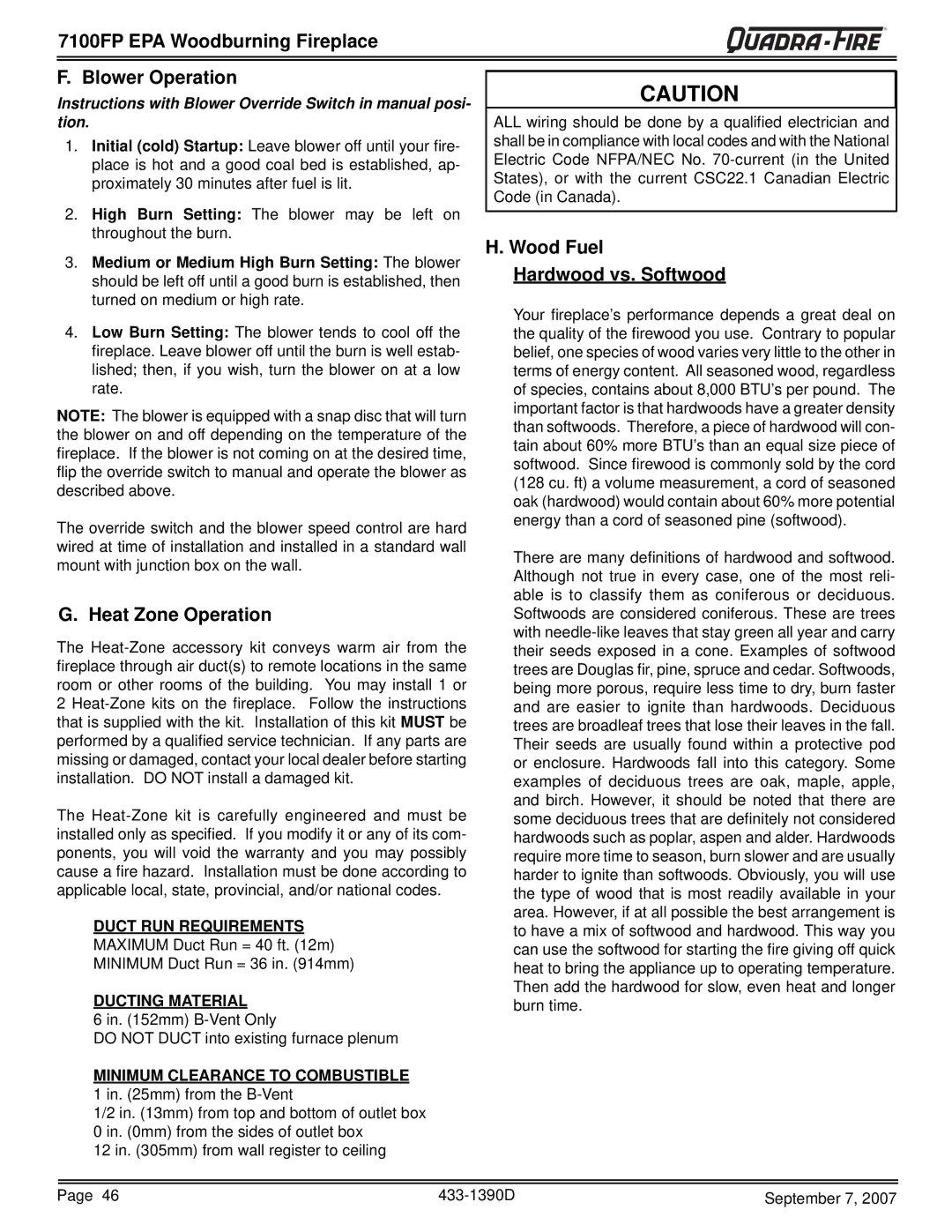7100FP-BK-B, 7100FP-GD-B, 7100FP-NL-B specifications
The Quadra-Fire 7100FP series, including the models 7100FP-BK-B, 7100FP-NL-B, and 7100FP-GD-B, represents an exceptional choice for homeowners seeking efficient and powerful heating solutions. These fireplaces are designed to provide warmth and ambiance while incorporating advanced technologies that enhance performance and ease of use.One of the primary features of the 7100FP series is its large viewing area, which allows homeowners to enjoy the mesmerizing flames while increasing the aesthetic appeal of any living space. The generous size of the firebox ensures that it can accommodate sizable logs, providing longer burn times and requiring less frequent reloading. This feature is particularly beneficial for those who appreciate an extended, leisurely evening by the fire.
A hallmark of the Quadra-Fire brand is its innovative heating technology. The 7100FP models are equipped with the patented Quadra-Fire combustion system, which promotes a cleaner burn and maximizes heat output. This system utilizes secondary combustion technology that burns off excess gases and particulates, resulting in a more environmentally friendly fire that emits fewer emissions compared to traditional wood-burning fireplaces.
Additionally, the 7100FP series includes advanced airflow designs that facilitate efficient heat distribution throughout the room. The adjustable air control allows users to easily regulate the burn rate and heat output, ensuring optimal comfort at any time. With a variety of trim options available, including the sleek black, traditional natural, and modern gold finishes, homeowners have the flexibility to choose a model that complements their interior decor.
Moreover, the 7100FP series is designed with user convenience in mind. For easy cleaning and maintenance, they include a removable ash pan feature. A glass viewing window is treated with a special coating, preventing soot buildup and allowing for uninterrupted views of the flames.
In terms of safety, the 7100FP units are equipped with a tempered glass door that is designed to withstand high temperatures, ensuring that the fireplace is safe for family gatherings. Overall, the Quadra-Fire 7100FP-BK-B, 7100FP-NL-B, and 7100FP-GD-B models seamlessly combine style, efficiency, and comfort, making them a top choice for those seeking a modern solution to home heating. With innovative technology and a commitment to performance, these fireplaces enhance any home’s ambiance while providing reliable warmth.

